

WhatsApp is the most used mobile messaging app in the world. It currently has 2 billion active users, who send an average of 50 messages everyday. The goal of this Case Study is to add a few new features to WhatsApp based on the problems that users face.

WhatsApp has been a fairly simple app to use. However, at times, I did find deficiencies in the features it provides.
Having used Discord's phone app where I could share my screen
easily, I wished I could do it on WhatsApp too.
Talking about the essential features we both deserve and need, group chats apparently are our
Gotham. We need a 'Polls' feature!
And empathizing with all the admins out there, we also need a 'Pin
the message' feature.
Also, considering you are one of those 2 billion users who use WhatsApp, have you ever called someone by mistake because you tapped on that little
phone icon? I feel you, mate.
Therefore, in this case study, I will try to improve upon all of these features on WhatsApp.
Upon short interviews with approachable WhatsApp users from an age range of 15 to 52 years, I found that the issues were indeed real and faced by almost everyone.
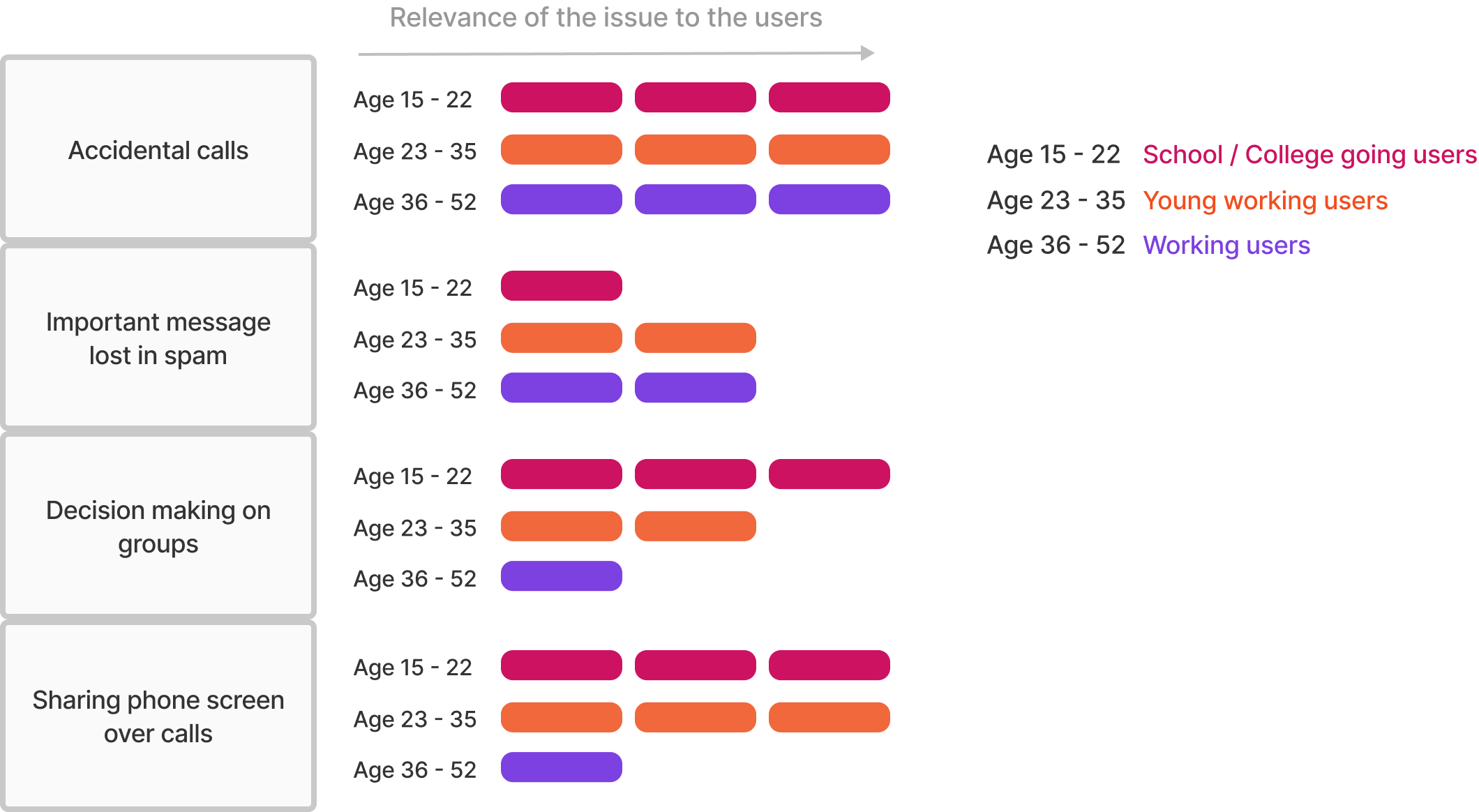


Millions of people have gotten used to WhatsApp’s interface. Still, there is something that has unanimously been a problem since the introduction of VoIP calls on WhatsApp.
It often happens that the user taps on the Voice Call icon instead of the Options icon, both placed next to each other on the top menu. I call it "The Clumsy Thumb" problem.
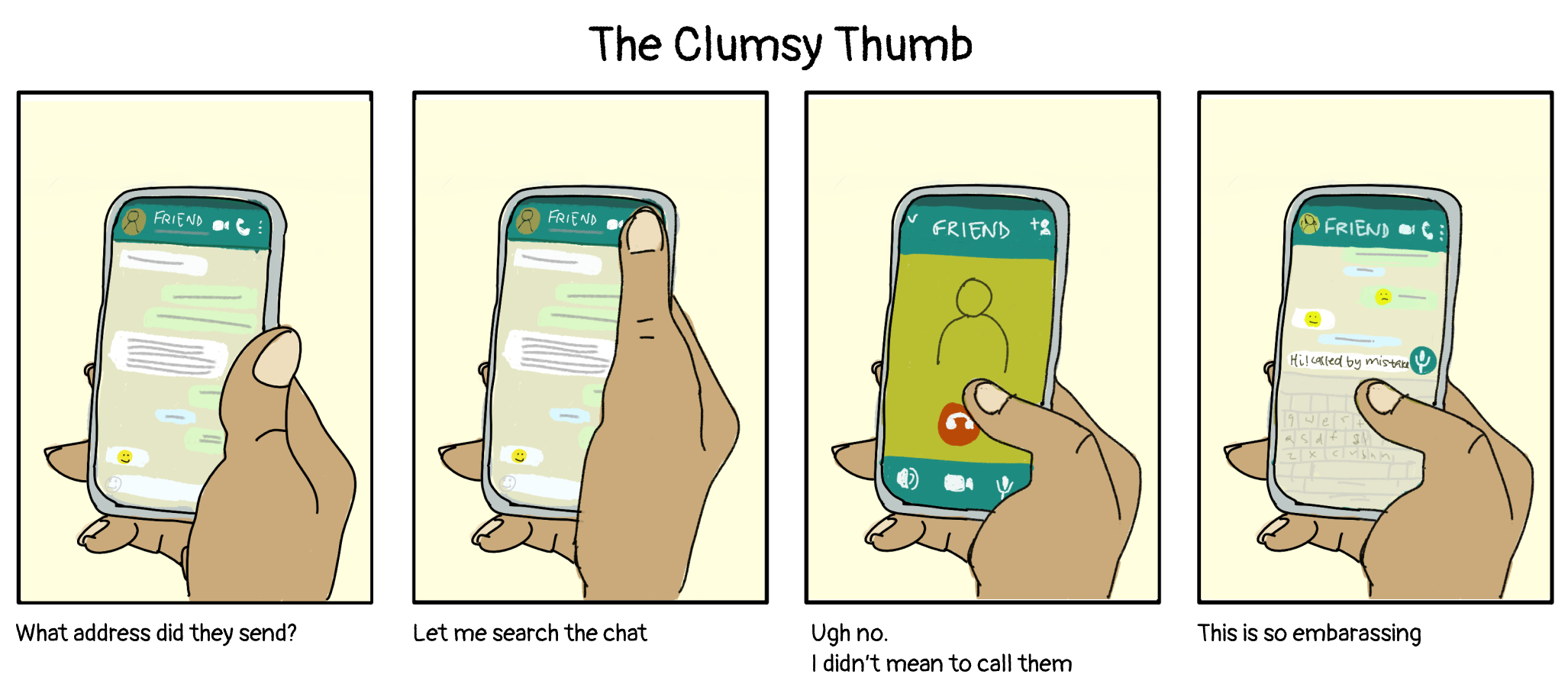
Here is a flowchart of how Kavya, admin of her WhatsApp group, manages to make group decisions.
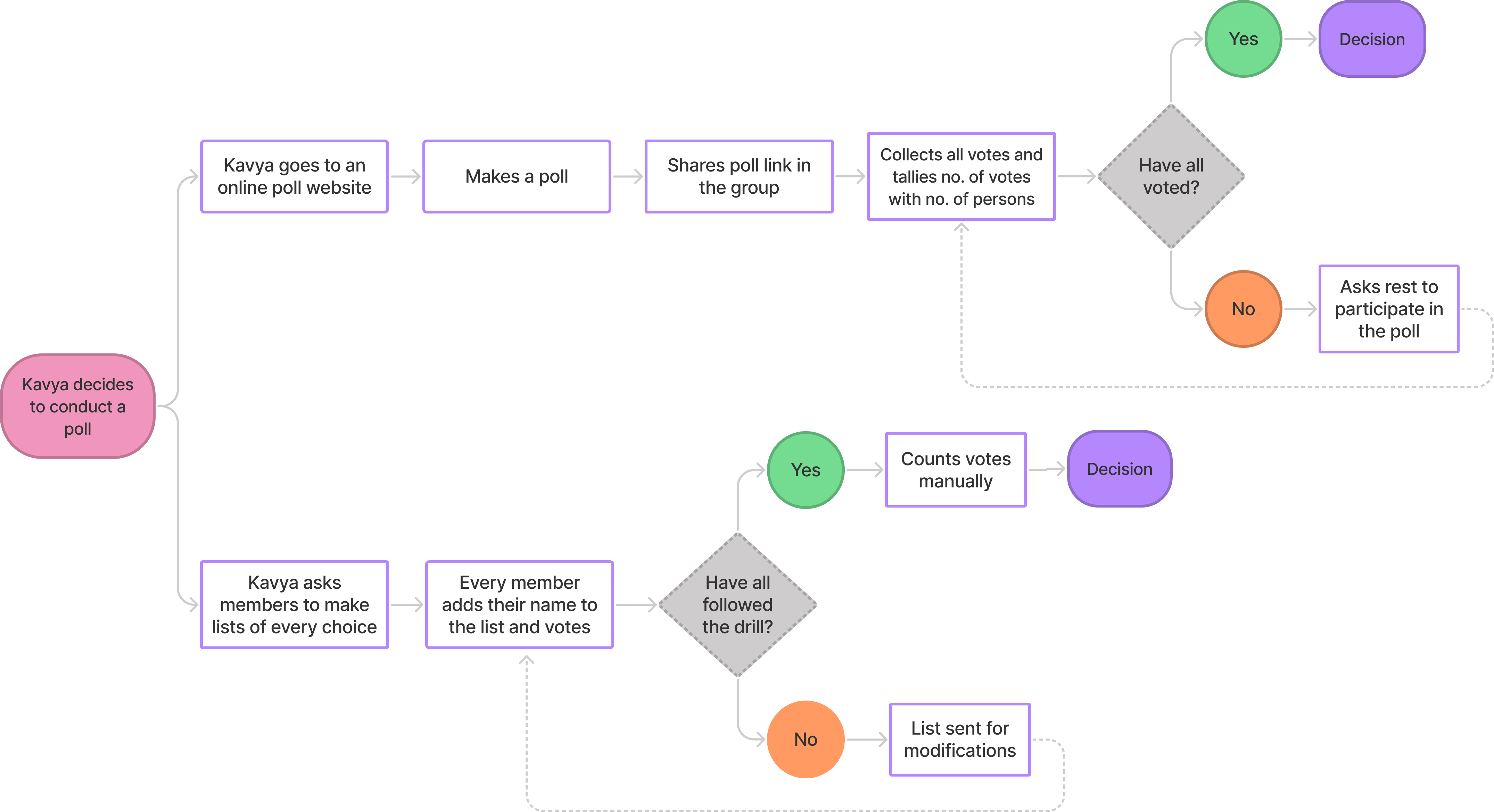
"Sometimes people's enthusiasm over announcements gets too overwhelming :/" ~ Kavya
Here is a screen recording of the same.
Following are the steps taken by Kavya to share her screen to Anushka over a phone call.

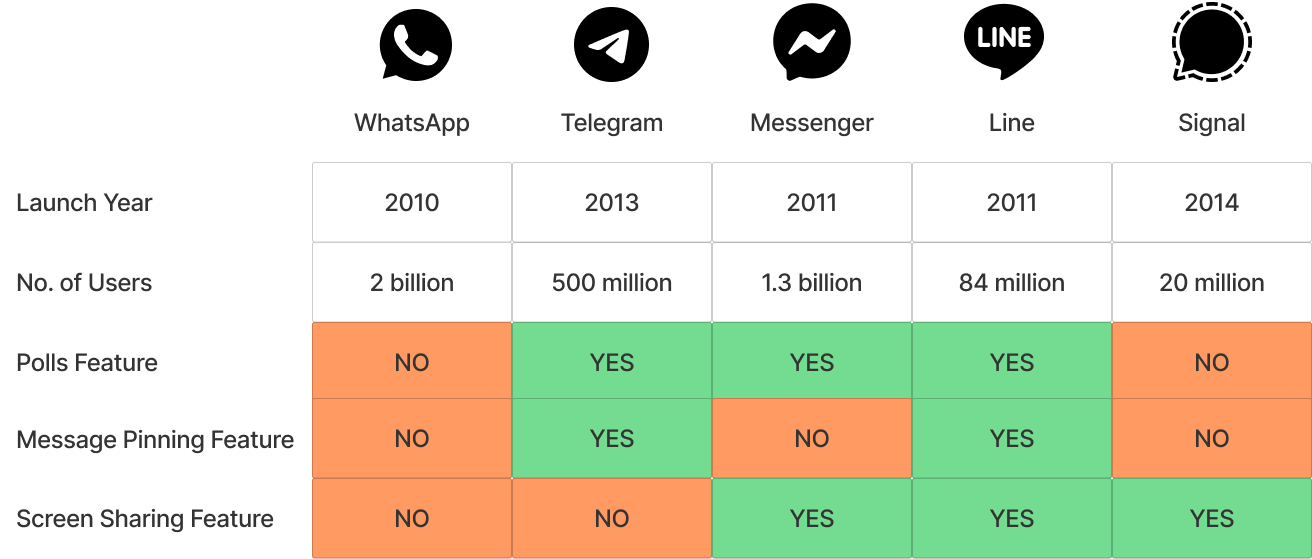
Ever since WhatsApp announced its controversial 2021 privacy policy, users have started migrating to Telegram and Signal. And the shift has not seen much back-shift as the new apps boast features that not only give you privacy but also offer unique tools that WhatsApp lacks. Telegram with over 500 million users and counting, it might just become WhatsApp's key competitor.

Keeping in mind that WhatsApp hasn't specifically advertised 'one-tap calling', I added a pop-up confirming whether the user wants to make a call.


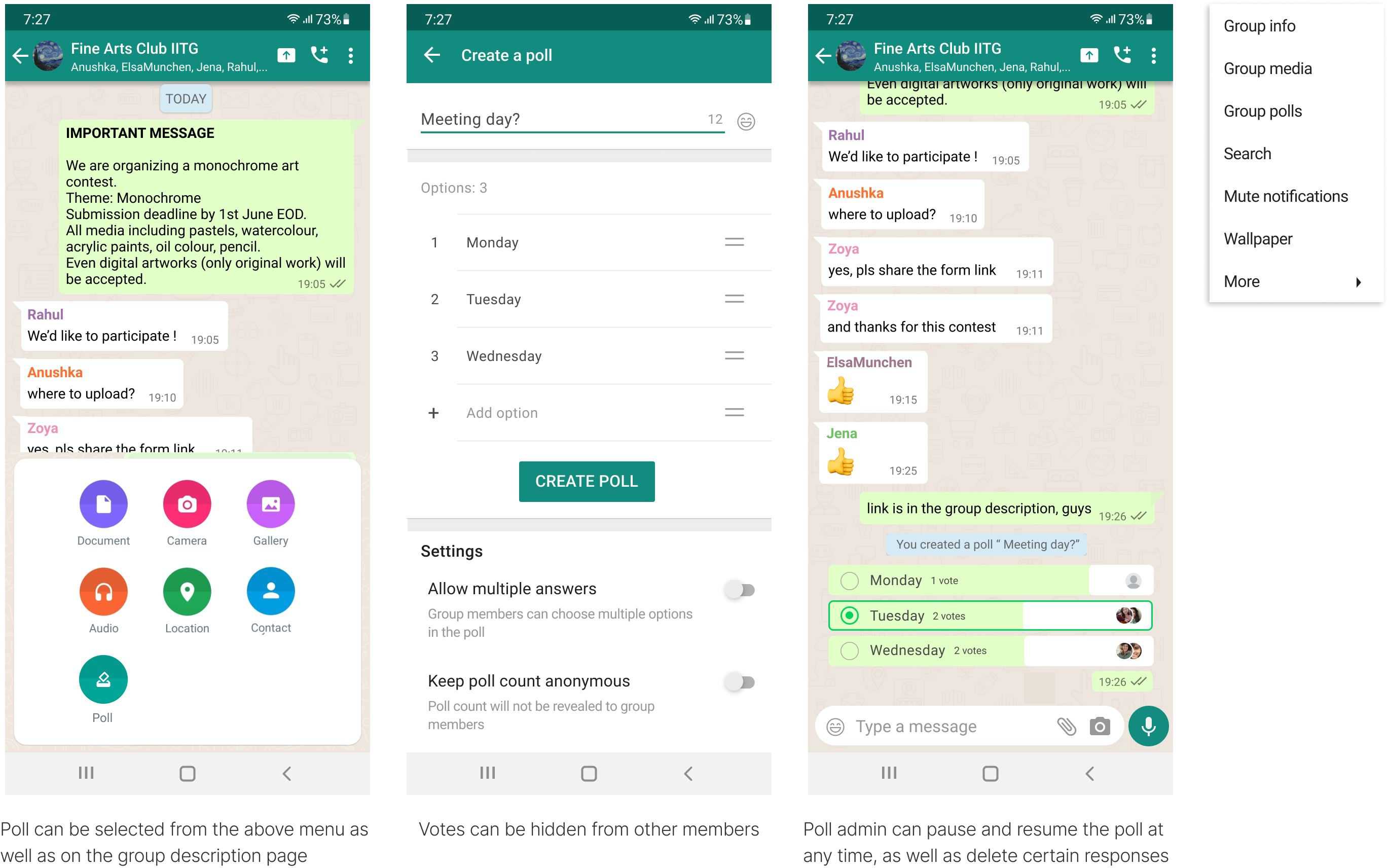
WhatsApp has a 'Star message' option, with which users can save a message for future reference in
their archives.
Telegram and other apps provide this feature for individual
group chats, where users can star the message for everyone on the group and add it to a common
archive, different for all group chats, while showing that a message was pinned.
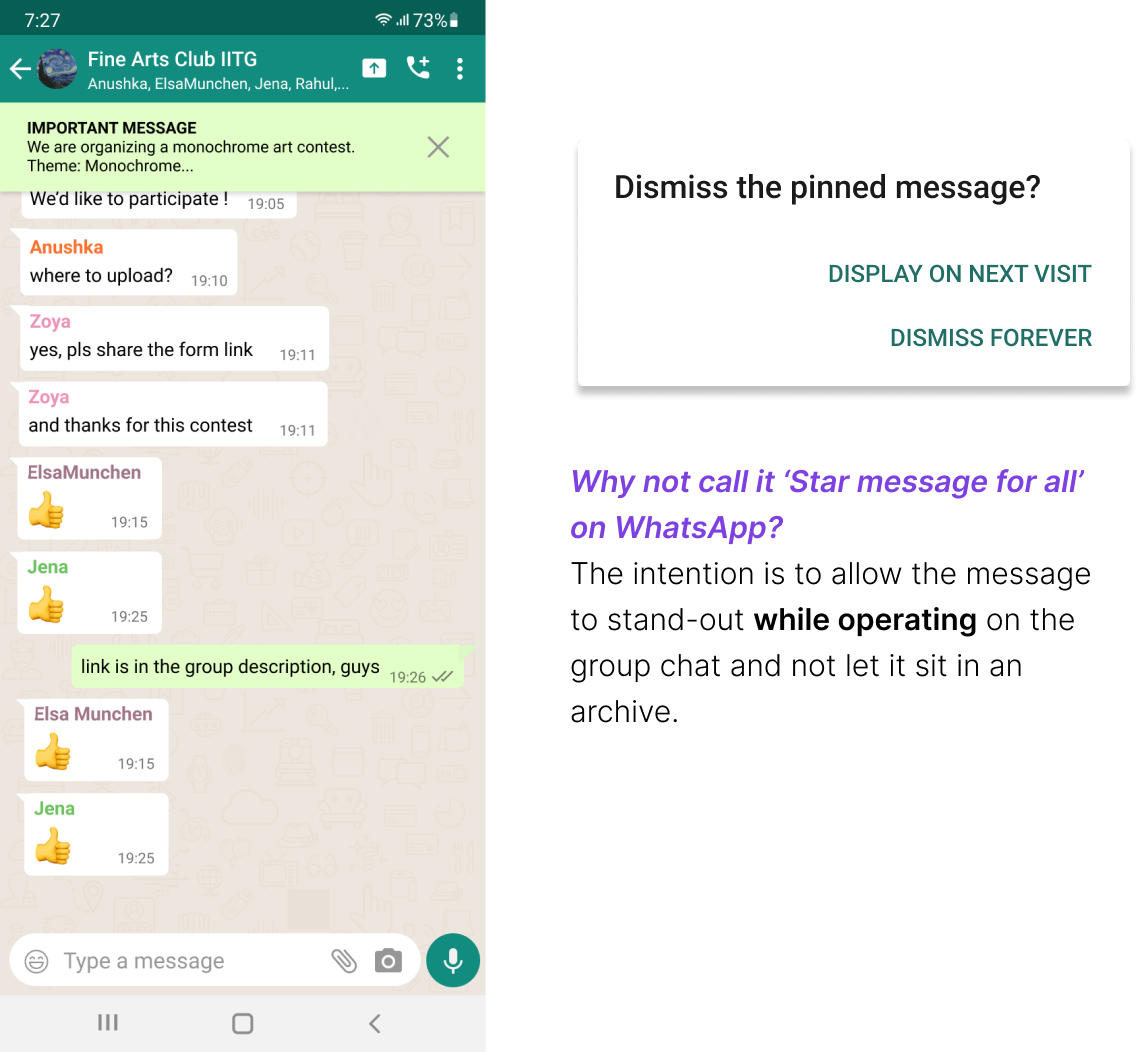
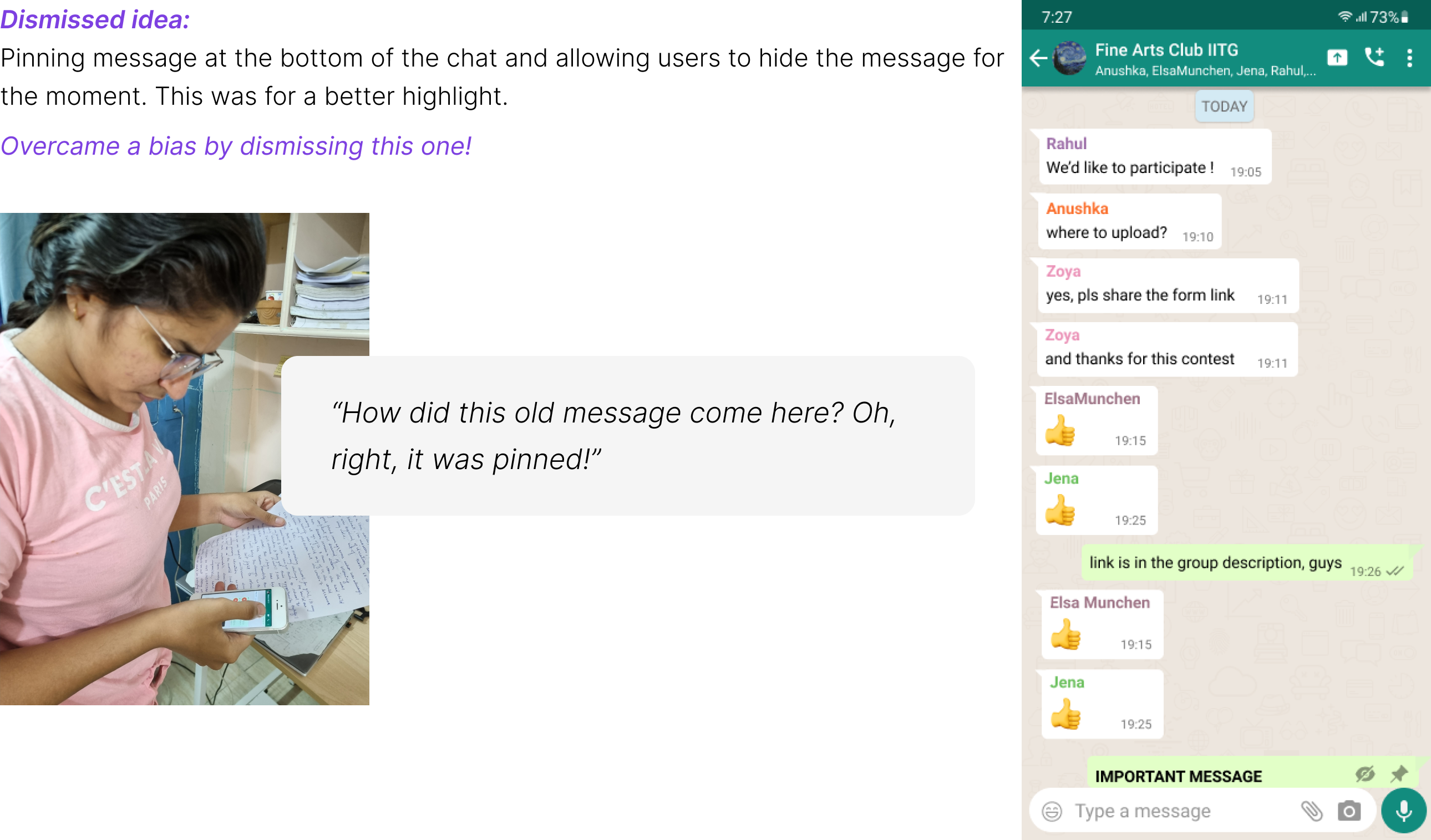
"You can't have privacy without security." - Larry Page
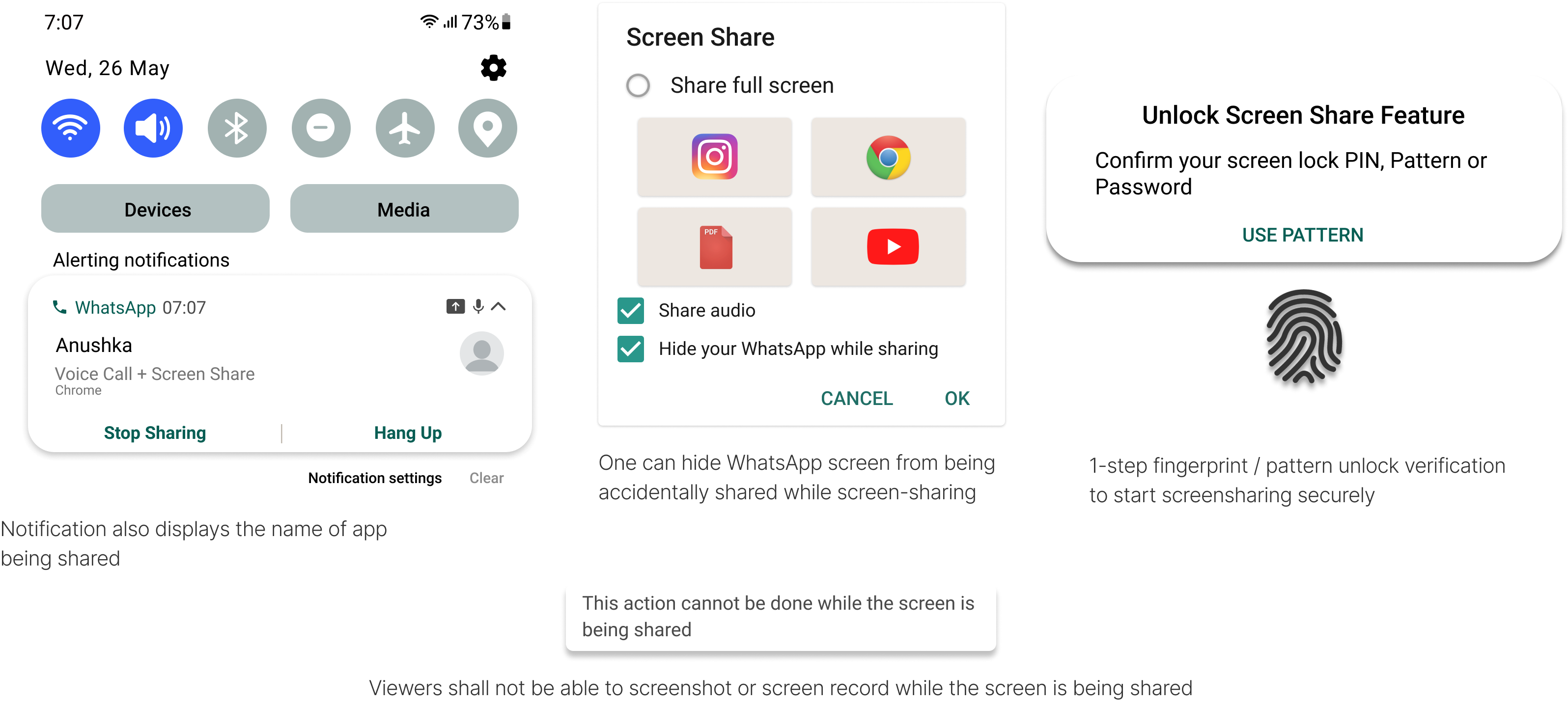
The WhatsApp brand is more than just a name. It's a set of values, attributes, and design principles that reflects the spirit of the company. Throughout the process of studying the app and proposing new features, efforts have been made to keep up with the same.
I have been using WhatsApp since 2015. The preliminary user for this case study was me. For user research, I asked my friends and family for the flaws they found on WhatsApp. Despite adding three new features, there is more that needs to be improved upon. Limit on the number of pinned messages, a separate archive for it; reminders for poll; live audio sharing etc needs to be discussed.
While researching on the case study, I found several other amazing features on Telegram. Two of the most important w.r.t. WhatsApp were to be able to initiate a conversation without saving one's contact and being able to share larger-sized files.
"The Clumsy Thumb Problem" is very real and I am proud of having named it with such relevance. As this case study came to an end, I realized that more than how a UX research is done, how I explain it is more essential.